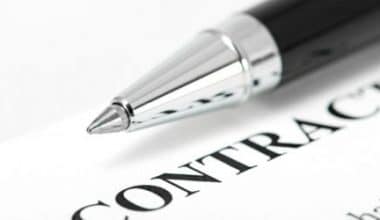A good presentation holds the audience’s attention while clearly and logically conveying information. Being a skilled presenter takes effort, but there are methods to hone your skills. In this article, we’ll discuss the ideas, qualities, and feedback examples of providing good presentations as well as how to make a good presentation to influence your audience’s comprehension of your material and their propensity to interact with your message.
Good Presentation
Oral presentations allow knowledge to be shared with an audience in order to inform or spark conversation. They work well as a communication tool. This is a learnable talent that is regularly used in the workplace.
One of the hardest tasks is giving a good presentation. It can be difficult and nerve-wracking for many people. Yet, as you become used to it, your dread will fade and you might even start to find enjoyment in it. In each situation, having strong communication abilities is essential. While it will help you get ready for the workforce, gaining experience while in school is crucial.
Ideas for a Good Presentation
The following presentation ideas will help you hold your audience’s attention as you speak. If you succeed, they’ll have a good opinion of your job when they leave the room. The ideas of a quality presentation include:
#1. Tell stories
You might seem more relatable if you use a personal example or experience. Also, it increases the audience’s sense of familiarity and connection with you. As a result, you will feel more at ease when presenting.
#2. Smiling and Looking at the Audience in the Eye
Making eye contact with the audience might help you connect with them and create a more intimate atmosphere. As a result, they’ll pay more attention to you and what you have to say. This is one of the ideas on the presentation that I have experienced in my work-life time.
#3. Develop Your Stage Presence
More than just words are necessary for effective communication; body language is also crucial. Avoid pacing or crossing your arms since these gestures suggest boredom or aloofness. Both the design of your presentation slides and how you handle yourself are crucial.
#4. Start Strong
The opening hooks your target audience, just like it does when reading a book, watching a movie, or writing an essay. Start your presentation off strong. If you use comedy in your presentation, it’s more likely that it will be favorably received.
Here are some ideas for a potent introduction:
- Mention a renowned individual’s proverb. This gives the topic background and places it in a cultural framework.
- Pose a rhetorical inquiry. When they consider the solution, this motivates audience members to actively participate in your presentation.
- start with a story. If you utilize short stories to introduce yourself and establish the mood for your speech, the audience will be more engaged in what you have to say.
entice the crowd inside. Invite the audience to join you on a puzzle-solving or discovery expedition at the start of your presentation. They are more likely to listen carefully and remember information if they feel included in the conversation.
#5. Demonstrate Your Passion
Show off your enthusiasm for the subject. Speakers that are most passionate about their subjects deliver the finest presentations.
#6. Plan Your Delivery.
This step includes the information delivery strategy. Which option is preferable in this situation—creating a PowerPoint presentation, using a teleprompter, or giving the presentation via Zoom? Should you organize an additional activity or memorize your notes?
Although many people memorize the best TED lectures, it’s never a bad idea to bring note cards as a backup. Also, if any of your technological components fail, all that will be left for you to rely on is your charisma and humor to keep the audience interested. Just in case, gather a backup collection of supplies.
#7. Practice
Practice makes perfect, as the saying goes. In front of the bathroom mirror, your partner, or a friend, practice presenting your speech. Accept any criticism or input that wasn’t what you were hoping for, but don’t let it deter you from continuing. The feedback we receive over time helps us improve. But keep in mind that it’s okay if you can’t persuade everyone.
How to Make a Good Presentation
Below are some ideas on how to make a good and quality presentation to your audience:
#1. Make It Simple.
Your presentation’s topics must be simple. What do you want people to remember from your preparation? Long, confusing lectures are the worst. Audiences should comprehend and implement what they’ve learned.
Reaching a wide audience requires simplicity. Use bullet points for crucial topics. This will help your viewers grasp key points without reading a lot.
To ensure comprehension, offer questions after the presentation. Asking questions and explaining concepts helps audience members learn.
#2. Make a Structure That is Captivating.
Consider yourself a member of the audience and decide which order will work best for your presentation. Make sure everything is reasonable and coherent. You might need to change the sequence of the slides, add more slides, or remove a part to keep the presentation interesting.
Give your company presentation a narrative. Make sure the tale you’re telling is interesting. Create a hypothetical problem, then take the audience through your “Aha!” moment when you understood the solution you’re presenting.
#3. Apply Visual Aids
Consider adding films or pictures to your slides. Using examples, strengthen your points. Props should not be misused because they can support your argument while still preserving your credibility and professionalism.
#4. Know the latest Trends and Design Principles.
To build a stunning presentation, you can use a number of platforms. Videos, graphs, and graphics can make information more interesting, especially when it is dry. The following are the basic guidelines:
- Avoid utilizing extensive text blocks on a single presentation.
- Instead of a crowded background, pick one that is simple.
- Read only the first few slides.
- Lastly, consistently use the same font and size.
Please only show the most crucial details on your screen. Then, further, explain them. Give a fascinating presentation without annoying your audience with loud colors or a lot of text.
#5. Adhere to the 10-20-30 Rule
Less than 10 slides, 20 minutes, and a 30-point font size are the recommended presentation standards for slide displays. By using this technique, you may organize your content and keep the audience’s interest.
10 Qualities of a Good Presentation
There are various qualities of a good presentation that make the presentation a very interesting one to both the presenter and the audience. Below are some qualities of a good presentation:
#1. Learn How to Speak
If giving presentations is a regular part of your job, you might want to think about taking voice lessons to improve your ability to speak out loud, clearly, and professionally. Voice coaches with experience deal with those who want to enhance their speaking voice in addition to those who want to take voice lessons for singing. You can change your voice’s characteristics, such as pitch, tone, resonance, and rhythm, with the assistance of a voice coach. You can also use them to improve your voice and get rid of problems like poor pronunciation.
#2. Eliminate Any Extraneous Language.
It’s crucial to work on cutting out filler words like “um” and “uh,” which could still mislead the audience and give you the impression that you’re anxious or uneasy. One of the simplest ways to accomplish this is by practicing your presentation in advance. As a result, you will find it less difficult to become aware of how often you use speech fillers.
If you initially find this difficult, you might want to consider doing without the filler words altogether. It might sound more natural if you pause now and again during your speech, and it might even help you emphasize certain points. During a break, you can choose a different slide or have a drink of water.
#3. Use Nonverbal Clues.
Engaging your audience is one of the most crucial jobs to do. Try to pause during your presentation when speaking to a smaller group to gaze at each person. If there is a bigger group of people present, you can gaze around without focusing on any particular individual.
Remember that your confidence may be communicated through nonverbal cues. When referring to the slides, try to keep your back to them and only quickly glance at them. Try adding hand movements to your presentation to liven it up rather than fidgeting or crossing your arms to signal concern.
#4. Give Their Names.
The audience you’re addressing should have an impact on how you present. Have a professional demeanor and concentrate on getting your point over when presenting to an audience in a professional situation. Make sure your topic is appropriate for their level of study if you’re presenting to a younger audience in a classroom setting, and try to use comedy.
#5. Arrive On Time
You will have more time to familiarize yourself with the surroundings and your equipment before the presentation if you arrive early for the meeting. If you need to set up anything, you can do so gently to avoid any delays during your presentation. If you arrive early, you might be able to relax, sip some water, and get ready.
#6. Fully Comprehend the Subject
Knowledge about the topic of your presentation is thus very vital if you want to come off as confident. If you have also done extensive study on your topic, you could feel more assured and be able to reply to inquiries from the audience effectively.
#7. Make a Presentation Plan.
You may still stay on topic and keep the audience’s focus on your main topics by planning your presentation. Giving your audience a heads-up on the subjects you’ll be covering in your presentation is an effective strategy to hone your presentation skills. When you give a brief overview of the subjects you will cover, the audience is aware of what the presentation is about and what message they may anticipate learning from it. There’s no need to go into great depth.
#8. Prepare Your Speech in Advance.
You can solve any problems you may not have anticipated, such as employing too many or too few visual aids or exceeding or falling short of the allotted time, by practicing your presentation in advance.
Practicing not only makes your subject more comfortable but also improves your presentational skills. You might avoid stumbling over your words or forgetting any important information if you do this. Also, make sure you memorize your material, you might be free to concentrate on other presentational factors like nonverbal cues and personality.
#9. Make Your Visual Aids and Presentations Straightforward.
Reduce the amount of text on your slides as much as possible. Use slide presentations carefully because they can be a terrific method to organize your talking points and communicate information. To avoid reading too much from the slides, use graphs, illustrations, and bullet points rather than lengthy paragraphs of text. To keep your audience interested, your deck must have a pleasing aesthetic appearance.
#10. Keep Your Cadence and Voice Positive.
Your presentation’s success may be significantly influenced by your pacing and tone. People want to listen to presenters who seem enthusiastic about what they’re talking about. Try to change your delivery style and cadence throughout your presentation rather than speaking monotonously and moving at a constant speed.
Consider using analogies to present facts while narrating a narrative. By speaking slowly and emphasizing key terms, you can clarify complex concepts. You could learn some advice on how to make the most of your voice during your presentation by paying attention to other presenters.
Good Presentation Feedback Examples
Giving a good presentation thus might sometimes be scary. Yet, there is one factor that can help presenters keep getting better: feedback. The examples of good presentation feedback that follow don’t just apply to presentations. Below are some examples of ideas that can be useful to get feedback that might also be useful while you’re speaking in front of a crowd:
You’re Doing Great Feedback Presentation Examples
- You clearly have a natural talent for planning how presentation materials will be distributed! Well done!
- You frequently deliver captivating presentations that are visually impressive. You are a master at holding people’s interest. Good work!
- You frequently give your coworkers the opportunity to speak for you. People have a wonderful opportunity to learn here, and they often enjoy the challenge.
- Although it can be challenging to keep presentations on topic with important agenda topics, you are quite good at it.
- You specify your topic in detail and make sure to stay on topic. Good work!For the presenter
- You produced and bound digital graphic presentations. fantastic way to represent the business! Good work!
- Your plan featured relevant content, and enticing visuals, and was simple to follow. Well done! You certainly have a designer’s heart!
- When presenting presentations, you always act professionally and many of them have the same structure. This effectively promotes continuity. Well done!
- You continuously maintain consistency whether presenting to peers, direct reports, company leaders, or small groups. At the time you present, none of these conditions create a challenge to you. Well done!
- You are a skilled presenter, both to staff and potential clients. You take on difficult issues head-on and make sure you’ve covered them fully before moving on. Well done!
- You effortlessly manipulate groups and demand attention during the presentation.
Think About Making a Modification Feedback Presentation Examples.
- You perform exceptionally well in some situations but poorly in others. Make an attempt to have a more cohesive message when presenting. You may improve your presentation skills by being able to communicate a clear idea or message.
- You often show signs of anxiousness when presenting presentations. In one-on-one conversations, you exude confidence, which helps you deliver presentations that are undeniably captivating. Carry on! You have the power to make it occur.
- When it comes to attention, presentations typically reflect some degree of disorder. I am aware that staying on topic might be difficult, but it is crucial if you want the audience to comprehend the main points and aim of your presentation.
- If you want to engage your audience and convince them to pay attention to what you have to say, you must be able to effectively use your voice. Throughout your presentation, try to focus on a select words that require more emphasis.
- Any presentation must succeed by having a solid understanding of the audience. Learn to interpret social cues and other people’s body language to determine your style and tone. Take attention to the audience’s comments and make any required adjustments to your presentation.
- It’s crucial to prepare for challenging inquiries during conversations. Try to plan ahead at least a few days in order to be prepared to respond to these inquiries effectively.
- You must be adaptable enough to change your presentation depending on the situation and the audience. Before making any changes, think about the audience that will be present when the presentation begins.
- Recall that you shouldn’t personalize disagreements. It’s uncomfortable for others to talk to you because you lose your composure a little too frequently. Disagreeing without being hostile is feasible.
- Only by practicing, practicing, and more practicing will you be able to enhance your public speaking. So that you are entirely comfortable speaking in front of and behind the mirror, practice your speech. You’ll gain information and be able to speak in front of an audience without being afraid at the end.
- Your presentations are excellent, and you are a master at using presenting tools. Sadly, sometimes your writing is flimsy and lacking in content. If there was no meaningful information, the display would be blank.
What Makes for a Good Presentation?
- Time sensitivity
- Clarity
- Imagery
- Engagement
- Confidence
- Conciseness
10 Qualities of a Good Presentation
- Maintain eye contact and a smile when speaking.
- usage of movements and facial expressions.
- Don’t get distracted.
- Be prepared; practicing makes perfect.
- Have confidence.
- effective beginning/ending
- Leave out the unnecessary words.
- Bring something you can share.
- Use a range of media
- Take advantage of pauses
What Are 3 Elements of a Good Presentation?
The introduction, the body, and the conclusion are the three main components of every presentation. Generally, the body of your speech should take up 75% of your speaking time, while the conclusion should take up 10%.
5 PS of Presentation
- Pace
- Pitch
- Power
- Pronunciation,
- pause.
4 Elements of Presentation
- Draw the audience’s focus. Your images should emphasize rather than detract from what you are saying.
- Be direct. Similarly, the fewer words you use, the better.
- Use images wisely.
- Your presentation should engage the audience.
What Are the 7 Steps to Make an Effective Presentation?
- Preparation. The layout of your presentation is influenced by a variety of things.
- deciding on your primary points.
- selecting your supporting evidence.
- setting up linking statements.
- creating an opportunity.
- constructing a conclusion.
- looking over your presentation
What Are the 10 Simple Rules for Effective Presentation?
- Each slide should only contain one idea.
- Spend no more than one minute per slide.
- Use your heading.
- Provide only the most important details.
- When credit is due, it should be given.
- Use visuals wisely.
- designed to prevent cognitive overload
- Make the slide so that even someone who is distracted can still understand the key points
- Improve slide design iteratively through repetition
- created to lessen the effects of technical disasters
Related Articles
- BUSINESS PRESENTATION: Meaning, Types, and How to Start Example
- SALES PLAN: What Is It, Examples, Strategy & Presentation
- How to Deliver a Successful Business Presentation?
- PRESENTATION IDEAS: Top 30 Ideas for Birthdays, Graduation & More
- Reasons Why Content Marketing Is Important






